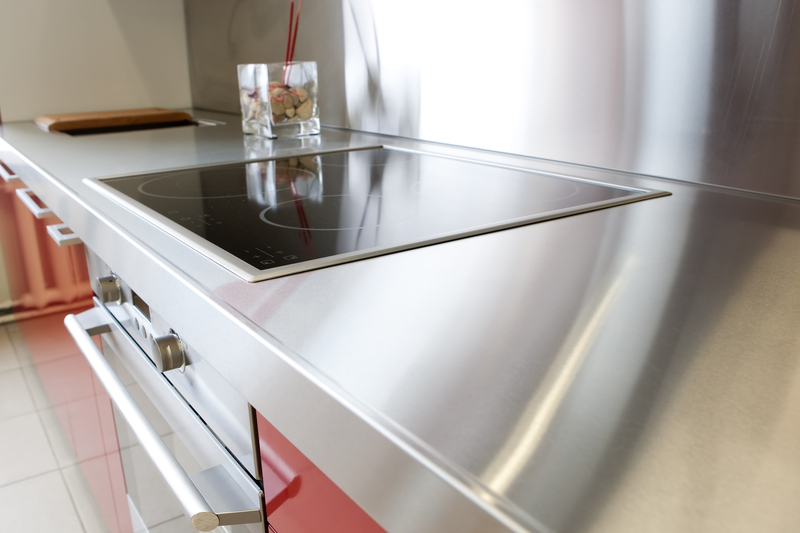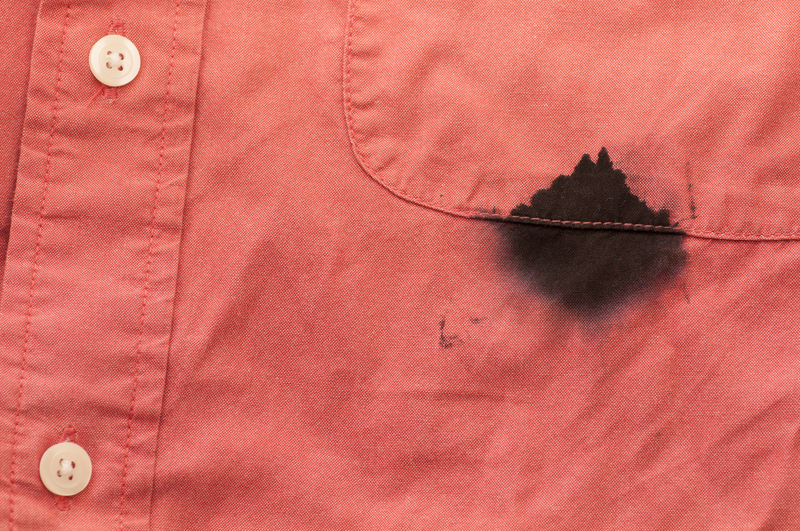Smart Solutions for a Mold-Free Bathroom Haven
Posted on 26/08/2025

Smart Solutions for a Mold-Free Bathroom Haven
Bathrooms, with their frequent humidity and warmth, present a perfect breeding ground for mold and mildew. Discovering how to keep your bathroom mold-free is crucial for both the beauty and health of your home. This comprehensive guide digs deep into smart solutions for a mold-free bathroom haven, using innovative prevention strategies, practical cleaning techniques, and modern technology for lasting results. Whether you're renovating, moving into a new home, or enhancing your old space, you'll find actionable tips here to achieve a truly mold-resistant bathroom.
- Why Does Mold Thrive in Bathrooms?
- The Basics of Bathroom Mold Prevention
- Smart Ventilation Solutions
- Innovative Anti-Mold Building Materials
- Game-Changing Daily Habits
- Cutting-Edge Technology for a Mold-Free Haven
- Effective Mold Removal Methods
- Long-Term Maintenance for a Mold-Resistant Bathroom
- Frequently Asked Questions
- Conclusion
Why Does Mold Thrive in Bathrooms?
Mold needs three things to grow: moisture, warmth, and a food source (like your bathroom walls, grout, or towels). Bathrooms naturally combine these elements, making ongoing vigilance essential. Steam from showers, poor air circulation, and even leaky fixtures create ideal environments for mold spores to land and multiply.
Common Problem Areas
- Grout and caulk lines: Most susceptible due to constant moisture exposure.
- Ceilings and corners: Poorly ventilated, often overlooked in cleaning routines.
- Behind cabinets and under sinks: Leaks and moisture can build up out of sight.
- Shower curtains and bathroom mats: Hold moisture, providing an ideal mold habitat.
The Basics of Bathroom Mold Prevention
Preventing mold before it takes hold is always easier--and cheaper--than remediating an existing problem. Here are foundational steps for mold prevention in bathrooms:
- Control humidity by utilizing exhaust fans and opening windows.
- Wipe down wet surfaces after each use--showers, sinks, and mirrors.
- Quickly repair leaks and drips to prevent hidden moisture build-up.
- Wash and dry bathroom mats, towels, and shower curtains regularly.
- Seal grout and caulk to create barriers against water infiltration.
Smart Ventilation Solutions for a Mold-Free Bathroom
Proper ventilation is the single most effective solution for keeping your bathroom mold-free. Here's how to take it a step further:
Upgrading Your Exhaust Fan
- Choose a high-capacity fan: Evaluate CFM (cubic feet per minute) ratings based on bathroom size. The higher the CFM, the better at removing moisture.
- Smart exhaust fans: Modern smart fans come with humidity sensors that automatically turn on and off as needed, ensuring optimal moisture control without manual effort.
- Regular fan maintenance: Clean fan covers and blades every 3-6 months to maximize performance.
If possible, install your exhaust fan directly over the bath or shower for the best moisture extraction.
Natural Ventilation Tips
- Open windows and doors: Allow fresh air to circulate after showers for at least 15-20 minutes.
- Use a dehumidifier: Portable dehumidifiers can supplement exhaust systems, especially in windowless bathrooms.
Innovative Anti-Mold Building Materials and Surfaces
When remodeling or repairing your bathroom, choose materials specifically designed for mold resistance. Smart selection at this stage can prevent problems for years to come.
Mold-Resistant Drywall
Replace standard drywall with greenboard, purple board, or other water-resistant alternatives for your bathroom walls and ceilings. These specialty panels have moisture-blocking cores and microbial inhibitors.
Anti-Microbial Paints and Coatings
- Mold-killing paints: Many manufacturers offer latex paints with built-in fungicides specifically for bathrooms and kitchens.
- Epoxy and silicone coatings: Use on grout, caulk, and corners to create a tougher barrier against mildew development.
Seamless Bathroom Fixtures
- Glass shower doors: Choose frameless glass doors instead of curtains, as glass is easier to clean and less likely to trap moisture.
- Solid surface vanities: Materials like quartz and solid surface resins are non-porous, leaving mold with nowhere to hide.
Game-Changing Daily Habits for a Mold-Free Bathroom
Sometimes, small routine changes produce the biggest results over time. Incorporate these habits to keep your bathroom a mold-free haven:
- Keep towels and mats dry: Hang them up immediately after use, and don't let them pile up on the floor.
- Squeegee shower walls and doors: Remove excess water after each use.
- Wipe any condensation: Dry windows, mirrors, and cold surfaces where water beads may collect.
- Declutter shelves: Fewer items on ledges and counters means fewer surfaces for mold to latch onto.
- Inspect for leaks: Check behind toilets, under sinks, and around the tub regularly for signs of dripping or pooling water.
Cutting-Edge Technology for a Mold-Free Bathroom
You can leverage modern tech to automate and streamline your mold prevention efforts. Here are today's smartest bathroom solutions:
- Humidity-sensing exhaust fans: Automatically activate when humidity reaches a certain threshold, turning off when levels normalize.
- Smart bathroom sensors: Monitor temperature, humidity, and leaks, sending notifications to your smartphone for immediate action if issues arise.
- UV-C disinfection lamps: Safe, scheduled doses of UV-C light in bathrooms can reduce mold and bacteria on surfaces without chemicals.
- Self-cleaning surfaces: Emerging materials feature anti-microbial coatings that actively resist mold growth.
Effective Mold Removal Methods for Bathrooms
Despite best efforts, sometimes mold does appear. Getting rid of it quickly--and safely--should be a priority. Here's how to achieve lasting results and a mold-free environment:
DIY Natural Mold Cleaners
- White vinegar: Spray on affected surfaces, let sit for 1 hour, then scrub and rinse. Vinegar kills up to 82% of mold species.
- Baking soda solution: Mix with water or vinegar for extra scrubbing power. Safe for grout and tiles.
- Hydrogen peroxide (3%): Spray directly, let fizz, then scrub and rinse clean.
Commercial Mold Removal Products
- Mold and mildew sprays: Look for products labeled "bathroom safe" and avoid harsh chlorine if possible for everyday cleaning.
- Grout and caulk renewers: These can restore white grout and create protective barriers at the same time.
Professional Remediation
- When to call a pro: If mold covers more than 10 square feet, involves drywall or subfloors, or returns after cleaning, consult a certified mold remediation specialist.
Long-Term Maintenance for a Mold-Resistant Bathroom
Maintaining a mold-free bathroom is easy with a smart maintenance plan. Here are recurring tasks that will keep your sanctuary fresh and healthy:
- Deep clean: Schedule a thorough cleaning of all surfaces and fixtures once a month.
- Inspect caulk and grout lines: Reseal annually or when you spot cracks.
- Test ventilation system: Check airflow and listen for abnormal fan noises.
- Monitor humidity: Use a digital hygrometer to ensure levels remain below 50% in the bathroom.
- Replace absorbent items: Change shower curtains, liners, mats, and sponges every 3-6 months.
Frequently Asked Questions About Mold-Free Bathrooms
How do I know if my bathroom mold is dangerous?
Most bathroom mold is non-toxic, but some types (like black mold - Stachybotrys chartarum) can cause allergies and respiratory problems. If you notice persistent health issues or the outbreak covers large areas, consult a professional for testing.
Should I repaint my bathroom with special paint?
Yes! Using a mold-resistant, mildew-proof paint on walls and ceilings is a smart way to add another line of defense and keep your bathroom looking new.
How quickly does mold appear after a leak or flood?
Mold can develop as soon as 24 to 48 hours after excess moisture appears. Quick drying and cleaning is crucial after any water event.
Can I use bleach to kill bathroom mold?
Bleach can kill visible mold on hard, non-porous surfaces but is less effective on porous materials like wood or drywall. Use safer alternatives (vinegar, hydrogen peroxide) for daily upkeep and only use bleach in well-ventilated spaces.
Is mold growth seasonal?
While mold can thrive year-round if conditions are right, it often appears faster in humid summer months or during periods when bathrooms aren't aired out regularly.
Conclusion: Your Mold-Free Bathroom Sanctuary Awaits
Transforming your bathroom into a mold-free haven is a blend of prevention, daily care, smart habits, and technological upgrades. By surveying trouble spots, investing in innovative materials, and leveraging smart ventilation and cleaning solutions, you greatly reduce the risk of stubborn mold taking hold. Remember, the key is consistency--tackle small issues before they grow, and enjoy a bathroom that's not just clean, but truly healthy and inviting. Take action today and enjoy the comfort of your mold-resistant bathroom retreat!
For more expert tips on smart bathroom maintenance, mold prevention, and healthy home living, bookmark this guide and check back for future updates. Make your bathroom a truly smart, safe, and mold-free sanctuary for years to come!




